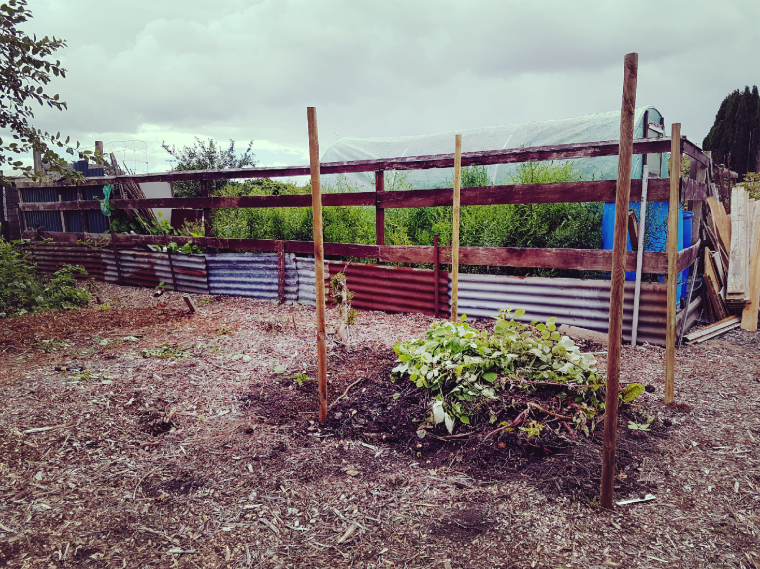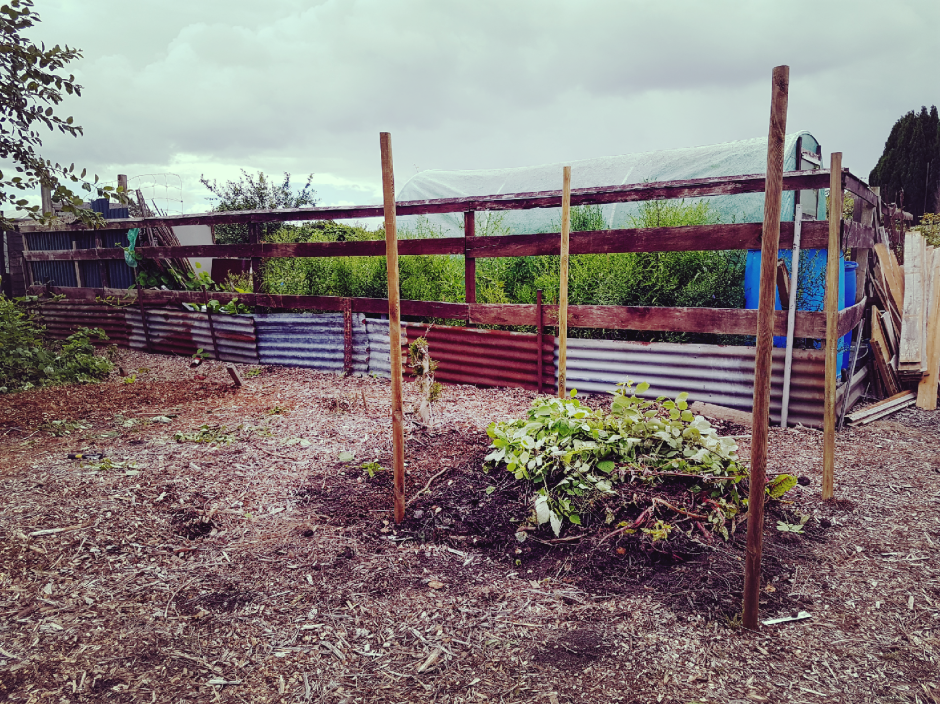When you take on an allotment or start a kitchen garden, the first thing you should do is create a compost pile.
The allotment will likely be overgrown and full to the brim of organic matter that will give your compost heap a head start before you have even thought about the prospect of sowing a single seed.
When I took on our allotment, I utilised two free ‘Dalek’ type composting bins that I discovered amongst the brambles.
These are very useful and some local authorities are providing these to residents either free or at a reduced cost so it’s worth checking with yours.
Compost is a vital component in the veg garden and especially so if you garden organically.
Horse manure is gold when it comes to organic matter for your crops but it can be difficult to get hold of.
Therefore, making your own compost is very rewarding. I’ve realised, with the space I have on the allotment, I could and should be doing a much better job of making the stuff.
I wrote in depth about composting, but the truth is there is no mystery to compost and in the real world, on the allotment or in the kitchen garden, it can be a straightforward task.
Simply put, mix plenty of dry material into the heap to make it as big as possible and turn it at least once.
During World War II, when the country was tasked with growing as much fruit and vegetables as possible, and when horse manure was even more difficult to get hold of, the dig for victory gardeners were encouraged to make as much compost as they could themselves.
British Film Institute, You Tube
I’ve taken some inspiration from the guide provided to the victory gardeners and have created a similar style of compost heap on our allotment.
This is very easy to make. I bought four tree stakes from Wicks to use as the corners of the heap and will probably use some wire fencing to keep the heap tidy – but these are not necessary and you will get the same results without them.
I created a 4ftx4ft square area at the top of the plot and banged the tree stakes in at each corner.
I’ve added the compost I had from within the Dalek bins and will add to the pile as the organic matter becomes available from the allotment and the kitchen. Easy!

When the heap is near completion, I will move the stakes and wire fence (if used) to the left and create a new space to turn the heap into.
I’ll cover with felt or straw, leave for a month and then turn it again. Then, I’ll leave it for six months before I use it in the garden. That’s the plan – I’ll keep you updated.
How are you composting on your allotment or kitchen garden? I’d love to hear from you. Drop me a comment below or join in the conversation on my Facebook page.
Follow Sharpen Your Spades! You can receive my post by email by subscribing to the blog (Right or Below) or you can follow me on BlogLovin.
You can get in touch with me here.



Was horse manure really difficult to get hold of in WW2? I would have thought that it would be easier than it is today. Lots of farms still used horses for ploughing, pulling wagons etc, and with fewer cars in existence people still used horses for getting around. Maybe the farmers were just more reluctant to part with the horse manure, since fewer artificial fertilisers were available?
LikeLiked by 1 person
From what I’ve read it is just that. The farmers using it for their own needs.
LikeLike
I compost everything I can lay my hands on, no-dig seems to require vast quantities and I can’t make it quick enough. It got me to thinking and I was actually in the middle of writing a blog post on the subject when you posted yours. It’s here: https://gardenruminations.wordpress.com/2017/08/02/composting/
LikeLike
On the trail of a Devon community compost initiative last week, I was lucky enough to end up speaking to Nicky Scott. Now there is a man who reallyknows his compost. Here’s a link to a series of videos that he has made https://www.youtube.com/watch?v=cYHHhLi0b3Y.
LikeLiked by 1 person
I’ve never had much luck with the Dalek style compost bins, everything just comes out as it was the year before I out it in 🙂
LikeLiked by 1 person
Yeah. I don’t think they are as useful on an allotment because of the amount of organic matter we produce and also need back. They are a bit awkward to mix and get going. I think they would be fine in a small kitchen garden though.
LikeLike